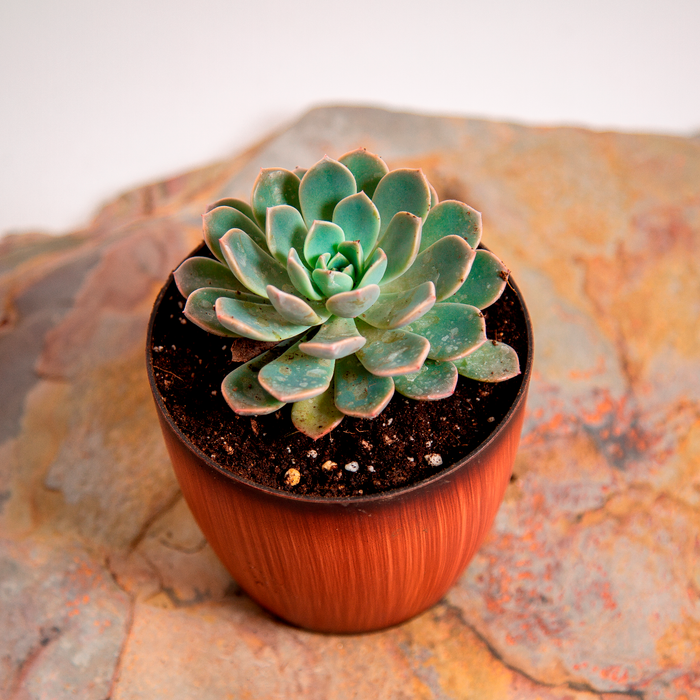
Echeveria mazarina
Common Name : Echeveria mazarina
Botanical Name: Echeveria mazarine
Other names: Echeveria ‘Big lotus’
Origin: Central America, Mexico, South America
What's special?
Echeveria Big lotus, named after its resemblance to Lotus flower, is regarded as a symbol of purity, enlightenment, self-regeneration, & rebirth. It is one beautiful succulent which does not require extensive maintenance and will thrive easily if provided with right amount of light. Its tiny leaves sometimes blush with pink color on the border when exposed to bright light or cooler temperatures, adding a perfect amount of contract to its light green foliage. This succulent is famous among gardeners & landscapers because of its evenly arranged green structure which gives a retro feel to any décor.
Growth Habits: Up to 15 cms high
Soil Requirement: Sandy, Cocopeat, well drained
Watering Schedule: Once a week as per the weather conditions. Plant will demand more water in hot conditions.
Light condition: Full or partial sunlight for 4 – 6 hours a day
Ideal Temperature: Anywhere between 18 - 32 degree Celsius
Repotting instructions: This plant hardly needs any repotting but whenever required you can easily repot the plant with fresh soil or large container having proper drainage.
Suitable Locations: Rock gardens, shaded Balcony, bedroom, windowsill, tabletop, vertical garden, etc.
Maintenance: Low
Caring Tips:
• Avoid keeping this plant outside during rainy season and also during the days of extreme heat or extreme cold. • Always use pots with proper drainage hole. Excess water can damage the plant in a very short time. Never let your succulents sit in water. • Water only when the soil is dry to touch. Do no put or sprinkle water on leaves of this plant as it may cause damage. • You can keep this plant indoor, but it will not grow quite as well due to its high requirement for sunlight. They need substantial amount of light to thrive.



